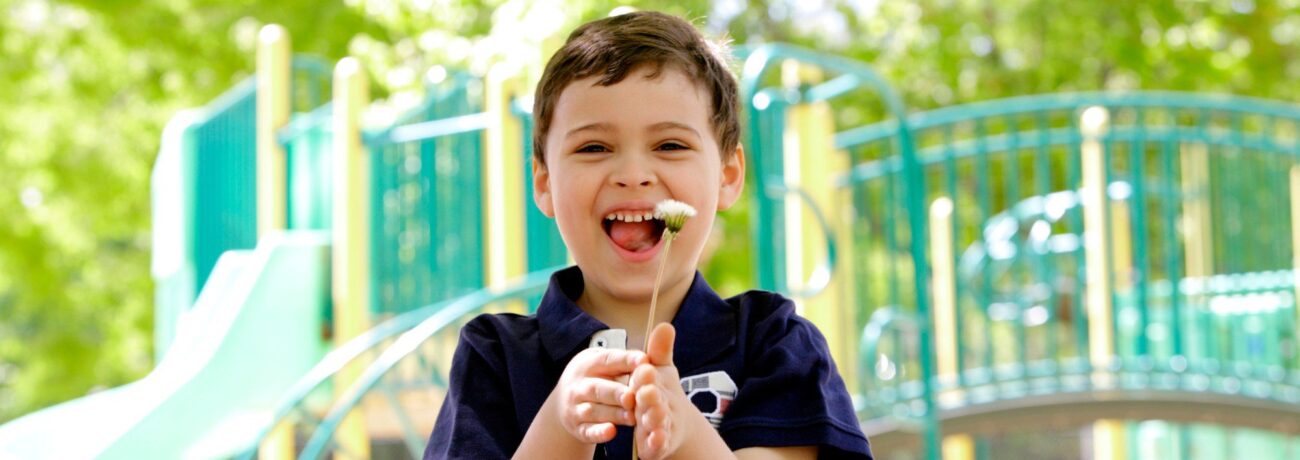Understanding Autism Spectrum Disorder
Autism Spectrum Disorder (ASD) is part of a broader category of autism spectrum disorders that affects how individuals communicate, process information, and interact with their environment. While every autistic child is different, many share common characteristics that can impact their academic experience.
Autism is a neurodevelopmental disorder that affects various aspects of learning and behavior. From difficulties with language skills and nonverbal communication to challenges with sensory integration and executive functioning, the way children on the spectrum experience and respond to learning environments can vary dramatically. Understanding these factors is the first step in designing more effective learning strategies for autistic students.
How Autism Affects Learning
The learning process relies on a combination of cognitive, social, and emotional skills. Autism affects learning in various ways, and for children with autism, certain core challenges can interfere with this process and lead to learning difficulties across various subjects and settings.
One of the most significant factors that impedes learning in children with autism is communication difficulty, which influences not only academic instruction but also classroom interactions and peer relationships. Beyond that, issues related to executive functioning, sensory processing, and social engagement can also hinder school performance if not properly addressed. Autism affects academic performance by presenting challenges in focus, information retention, and understanding abstract concepts. A structured environment and parental support are crucial in mitigating these challenges to improve academic outcomes.
Creating a supportive learning environment that accommodates these challenges is essential to helping every child reach their potential. Tailored strategies by educators and professionals are vital to support a child’s learning experience, particularly in overcoming the unique challenges linked to autism.
Communication Difficulties: A Core Barrier
Communication difficulties are often the most visible and impactful issue for autistic children in educational settings. These communication challenges include both verbal and non-verbal communication difficulties, such as understanding subtle verbal cues, interpreting body language, and expressing thoughts clearly.
For example, a child may struggle to grasp figurative language such as idioms or sarcasm, leading to confusion during classroom discussions. Others may have trouble forming complete sentences, initiating conversations, or using nonverbal communication like gestures or facial expressions.
Speech-language pathologists (SLPs) play a crucial role in helping autistic children overcome language-processing challenges by teaching strategies that enable them to articulate words effectively and initiate conversations with teachers and peers.
Non-verbal communication, such as gestures and facial expressions, is also crucial for social interactions but can lead to misunderstandings when others may not interpret them correctly.
Common communication barriers include:
- Difficulty processing spoken instructions, especially when multi-step
- Challenges understanding abstract concepts or unfamiliar vocabulary
- Limited ability to express needs or ask for help in class
- Difficulty engaging in group discussions or answering questions aloud
Support strategies may include:
- Visual supports (e.g., visual schedules, visual timers)
- Augmentative and Alternative Communication (AAC) tools such as PECS or speech-generating devices
- Collaboration with speech-language pathologists to develop tailored interventions
When communication pathways are strengthened, a child’s learning experience becomes less stressful and more productive.
Executive Functioning and the Learning Process
Another often overlooked issue that significantly impedes learning is executive functioning, a set of mental skills that include organizing materials, planning tasks, regulating emotions, and remembering instructions.
Many autistic students struggle with managing different tasks and responsibilities:
- Initiating tasks and transitioning between learning activities
- Organizing assignments and materials needed for academic tasks
- Managing time, particularly on long or multi-step projects
- Problem-solving skills, especially when flexible thinking is required
These difficulties can directly affect a child’s ability to complete tasks, focus during lessons, and follow through with assignments. Creating to-do lists can be an effective strategy to help children stay focused and manage transitions between school and home.
Helpful strategies include:
- Breaking tasks into smaller steps using checklists or visual to-do lists
- Providing extra time to process instructions and complete work
- Teaching predictable routines to promote consistency
- Using video modeling to demonstrate task sequences
By addressing executive dysfunction, educators can reduce frustration and help autistic students build the confidence to manage learning tasks more independently.
Sensory Processing Challenges in the Classroom
Children with autism often have atypical responses to sensory input, ranging from hypersensitivity to under-responsiveness. This can significantly impact their ability to concentrate, engage in lessons, and participate in classroom activities.
Sensory processing issues can cause:
- Heightened sensitivity to noise, lights, smells, or textures
- Avoidance of certain materials or classroom spaces
- Behavioral outbursts in response to sensory overload
- Fatigue or distraction due to constant sensory dysregulation
These challenges can make traditional classroom settings overwhelming. For instance, a child might cover their ears when the bell rings or become agitated by fluorescent lights. Sensory integration difficulties necessitate sensory-friendly adaptations in the classroom, such as using visual aids, allowing sensory breaks, and creating a supportive environment with appropriate tools and resources to facilitate learning.
Sensory-friendly learning supports may include:
- Sensory breaks to regulate emotions and reset focus
- Fidget tools or weighted items to support self-regulation
- Flexible seating and quiet zones to reduce stimulation
- Modified materials for children with tactile sensitivities
Creating a sensory-aware classroom can significantly improve a child’s ability to stay engaged and learn effectively.
Social Skills and Academic Engagement
Social interaction plays a critical role in the learning process, from participating in group projects to building peer relationships. Many autistic children have difficulties with perspective-taking, recognizing facial expressions, and interpreting social norms, which can affect their classroom confidence and emotional safety. Social skills training can have a significant impact on classroom confidence and emotional safety.
This social disconnect can lead to:
- Isolation from peers during group activities or recess
- Misunderstanding rules or expectations in cooperative settings
- Increased anxiety about participation
- Difficulty adjusting to new teachers or classmates
Reinforcing positive behaviors, such as cooperation and communication, is essential for enhancing social interactions and academic engagement.
Effective interventions include:
- Social stories that explain classroom scenarios
- Social skills groups with peer modeling and reinforcement
- Role-playing to teach turn-taking, greetings, or asking for help
- Reinforcing positive behaviors and celebrating social successes
When social skills are intentionally taught, children can build the confidence to interact, collaborate, and thrive academically.
Individualized Instruction for Autistic Learners
The best way to support autistic children in school is through individualized instruction that takes into account their strengths, challenges, and interests, especially when addressing the unique needs of children with autism and learning disabilities. A one-size-fits-all approach is not effective for neurodiverse learners.
Individualized strategies may include:
- Using visual aids to teach academic concepts
- Offering alternative methods of response (e.g., typing instead of speaking)
- Creating structured environments with minimal distractions
- Adapting assignments based on the child’s learning style
It is important to understand that while autism itself is not classified as a learning disability, a significant percentage of individuals with autism experience learning disabilities like dyslexia or ADHD. Appropriate interventions and support are necessary to help these children reach their academic potential.
Collaboration between educators, therapists, and families is essential for crafting meaningful learning plans. Whether through Individualized Education Programs (IEPs) or more informal classroom accommodations, personalized approaches create a more inclusive, effective learning experience.
Supporting Learning in Autism
Supporting the learning journey of children with autism requires a multifaceted approach that addresses their unique needs and challenges. By implementing targeted strategies, educators and caregivers can create a more inclusive and effective learning environment.
Key supportive measures include:
- Creating a Structured Environment: Establishing a predictable daily routine and providing a structured environment can significantly enhance an autistic child’s learning experience. Structured environments help reduce anxiety and improve focus by offering clear expectations and consistency.
- Using Visual Aids and Supports: Visual aids such as visual schedules, visual timers, and other visual supports can be incredibly beneficial. These tools help children with autism understand and process information more effectively, making it easier for them to follow instructions and complete tasks.
- Providing Sensory Breaks: Sensory breaks are essential for helping children with autism regulate their sensory experiences. Allowing regular breaks to engage in sensory activities can reduce anxiety and improve concentration, making it easier for them to re-engage with learning tasks.
- Incorporating Social Skills Training: Social skills training is crucial for helping autistic children navigate social interactions. Teaching skills such as initiating and maintaining conversations, understanding social cues, and developing relationships can enhance their ability to interact with peers and participate in group activities.
- Adapting Communication Methods: Using alternative communication methods, such as picture communication symbols, augmentative and alternative communication (AAC) devices, or sign language, can help children with autism communicate more effectively. These tools can bridge communication gaps and reduce frustration.
- Providing Individualized Instruction: Tailoring instruction to meet the unique needs and learning styles of each autistic child is vital. Individualized instruction can address specific challenges and leverage strengths, helping children achieve their full potential.
- Encouraging Self-Advocacy: Teaching children with autism to self-advocate and express their needs and wants is essential for developing independence and confidence. Encouraging self-advocacy empowers children to take an active role in their learning and personal development.
- Fostering a Supportive Environment: Creating a supportive and inclusive environment that values and respects individuals with autism is fundamental. A supportive environment helps children feel more comfortable and confident, promoting a positive learning experience.
By implementing these supportive measures, educators and caregivers can create a learning environment that not only accommodates the unique needs of autistic children but also empowers them to thrive academically and socially.
Promoting Positive Learning Experiences
Beyond accommodations, recognizing progress and achievements can have a significant impact on motivation and academic success, creating an emotionally safe and encouraging environment that is key to long-term academic growth. Autistic children often face self-esteem challenges due to frequent misunderstandings or difficulty keeping pace with peers.
To foster motivation and resilience:
- Celebrate progress over perfection
- Encourage self-advocacy by involving children in their own learning goals
- Provide opportunities for autonomy through choice-based activities
By building trust and focusing on each child’s potential, we can turn educational settings into places where autistic learners feel empowered, not excluded.
Conclusion
Children with autism face unique challenges that can significantly impact their academic performance. From difficulties with communication and executive functioning to sensory integration issues, social skills gaps, and repetitive behaviors, these barriers can make traditional classroom learning especially difficult. Additionally, difficulty concentrating can affect learning experiences for children with autism, leading to challenges in problem-solving, organization, and transitions.
But with thoughtful interventions, individualized instruction, and a commitment to understanding each child’s learning style, we can create classrooms where all children, not just some, have the opportunity to thrive. Supporting autistic learners isn’t about changing who they are; it’s about changing how we teach, listen, and build inclusive learning environments where they feel understood and empowered.
Need expert support navigating your child’s learning challenges? At Champions ABA, we understand the communication, sensory, and executive functioning barriers that can significantly impact a child’s academic experience. Our certified team uses individualized strategies rooted in evidence-based practices like ABA, visual supports, and social skills training to help your child grow with confidence, in and out of the classroom. Call (877) 242-1744 or visit our website today to discover how we can support your child’s unique learning journey.
FAQs
Which issues significantly impede learning for children with autism?
The most significant issues include communication difficulties, executive functioning challenges, and sensory processing issues. These factors can impact a child’s ability to follow instructions, engage with peers, and participate effectively in academic activities.
What are the learning difficulties for children with autism?
Autistic children may experience difficulties with language comprehension, processing verbal instructions, organizing learning materials, and managing time or transitions. These challenges often require individualized strategies and classroom accommodations to support meaningful learning.
What is the most common issue for children with autism?
Communication difficulties are among the most common and impactful challenges. These may include trouble with expressive or receptive language, interpreting nonverbal cues, or understanding abstract or figurative language used in classroom settings.
What are the barriers to learning for children with autism?
Barriers include a lack of appropriate sensory accommodations, rigid classroom routines, teaching styles that don’t align with the child’s learning preferences, and limited teacher training in behavior management strategies for autistic students. Addressing these barriers requires a collaborative, individualized approach.



